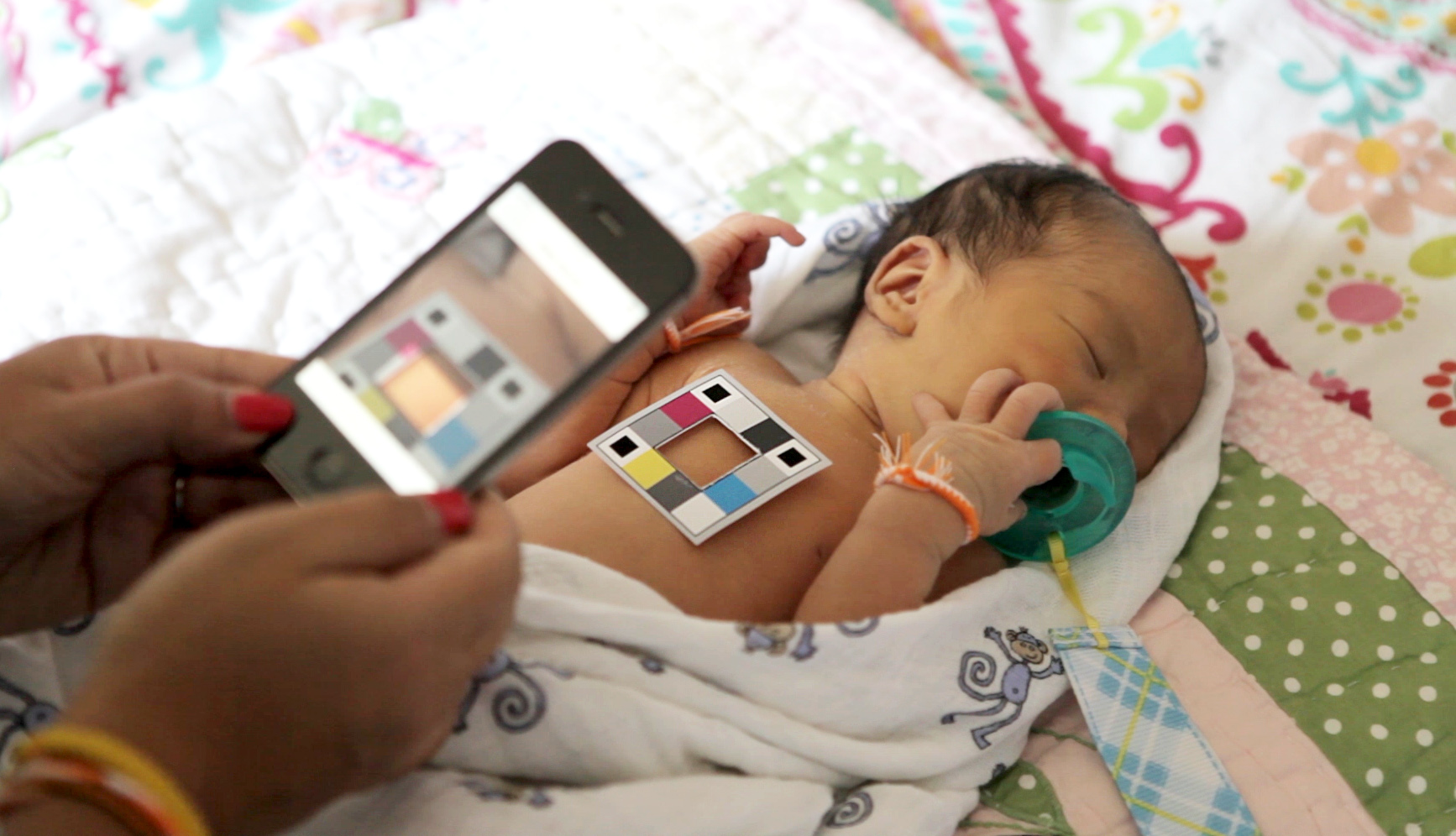@inproceedings{deGreef:2014:BUM:2632048.2632076,
author = {de Greef, Lilian and Goel, Mayank and Seo, Min Joon and Larson, Eric C. and Stout, James W. and Taylor, James A. and Patel, Shwetak N.},
title = {BiliCam: Using Mobile Phones to Monitor Newborn Jaundice},
booktitle = {Proceedings of the 2014 ACM International Joint Conference on Pervasive and Ubiquitous Computing},
series = {UbiComp '14},
year = {2014},
isbn = {978-1-4503-2968-2},
location = {Seattle, Washington},
pages = {331--342},
numpages = {12},
url = {http://doi.acm.org/10.1145/2632048.2632076},
doi = {10.1145/2632048.2632076},
acmid = {2632076},
publisher = {ACM},
address = {New York, NY, USA},
keywords = {bilirubin, health sensing, image processing, mobile phones, neonatal jaundice},
}

